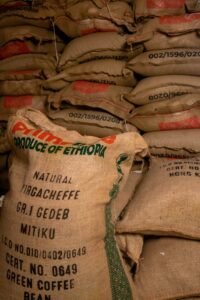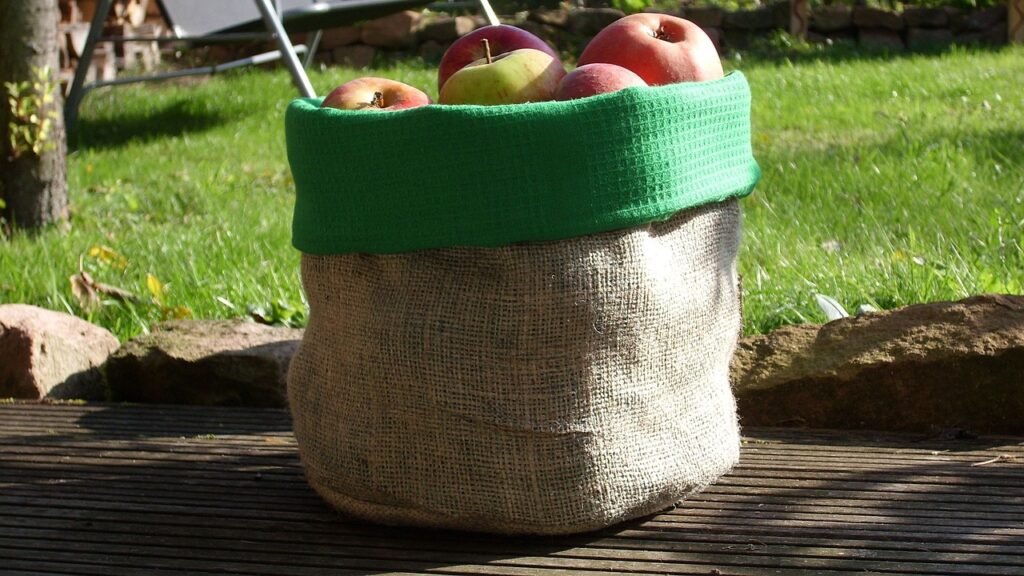Jute, often referred to as the “golden fiber,” has been an integral part of human civilization for centuries. With growing environmental concerns about plastic pollution, jute bags are being recognized for their numerous benefits. This article explores the environmental, economic, and traditional aspects of jute bags, supported by research-based data.
Traditional Use of Jute Bags
Jute has a rich history, particularly in South Asia. Historically, jute fibers were used to make ropes, mats, and sacks. The cultivation and use of jute in making bags and other products date back to ancient times in India and Bangladesh. These bags were primarily used for agricultural purposes, such as storing grains and transporting goods. Their durability and natural resistance to wear and tear made them a staple in rural economies. 
Environmental Benefits of Jute Bags
1. Biodegradability and Eco-Friendliness
Jute is a natural fiber that is 100% biodegradable and compostable. A study published in Environmental Science & Technology (2015) emphasized that jute decomposes within 2-3 years, significantly faster than synthetic materials . Unlike plastic bags, which can take up to 1,000 years to break down, jute bags do not contribute to long-term pollution.
2. Low Carbon Footprint
The cultivation of jute is environmentally friendly. It requires minimal pesticides and fertilizers compared to other crops like cotton. A life cycle assessment conducted by the International Journal of Life Cycle Assessment (2011) highlighted that jute cultivation has a lower carbon footprint due to its efficient photosynthetic properties. Jute plants absorb more CO2 and release more oxygen compared to other crops, contributing positively to the environment.
3. Soil Health and Water Conservation
Jute cultivation enhances soil health by increasing its fertility. The residues left after harvesting jute act as natural fertilizers. Additionally, jute requires less water compared to crops like cotton. According to a report by the Food and Agriculture Organization (FAO), jute cultivation consumes about 60% less water than cotton, making it a more sustainable choice. 
Economic Impact of Jute Bags
1. Employment Generation
The jute industry is a significant source of employment, particularly in rural areas of South Asia. In Bangladesh and India, millions of farmers and workers are engaged in jute cultivation and processing. According to the Bangladesh Jute Mills Corporation, the jute industry provides employment to over 4 million people in Bangladesh alone .
2. Economic Diversification
Jute bags offer economic diversification, providing farmers with an alternative source of income. The increased global demand for eco-friendly products has boosted the jute market. Research by the International Jute Study Group (2018) indicated that the global jute market is expected to grow by 5.9% annually, driven by the rising preference for sustainable products .
3. Export Earnings
Jute and jute products are significant export commodities for countries like Bangladesh and India. In 2020, Bangladesh earned over $1 billion from jute exports, according to the Export Promotion Bureau of Bangladesh. This revenue is crucial for the economies of these countries, helping to stabilize income and support development initiatives. 
Health and Safety Benefits
1. Non-Toxic and Safe
Jute bags are non-toxic and safe for carrying food items. Unlike plastic bags, which can leach harmful chemicals, jute bags do not pose health risks. A study by the Indian Institute of Toxicology Research (2013) confirmed that jute fibers do not release toxic substances, making them ideal for food storage and transportation.
2. Durability and Reusability
Jute bags are known for their strength and durability. They can withstand heavy loads and are reusable for many years. This reduces the need for single-use bags, contributing to waste reduction. According to a report by the UNEP, using a jute bag just 10 times can offset the environmental impact of producing a single-use plastic bag. 
Alternative Uses and Innovations
1. Fashion and Lifestyle Products
Jute is increasingly being used in fashion and lifestyle products. From handbags to footwear, jute’s natural texture and eco-friendliness have made it popular in the fashion industry. The Jute Products Development and Export Promotion Council (JPDEPC) reported a 20% increase in the export of jute-based fashion products in 2020 .
2. Composite Materials
Jute is being used in composite materials for automotive and construction industries. These composites are lighter and more sustainable than traditional materials. Research by the Indian Institute of Technology (IIT) in 2019 demonstrated that jute composites have excellent mechanical properties, making them suitable for various applications.
Jute bags offer a multitude of benefits, from environmental sustainability to economic advantages. Their biodegradability, low carbon footprint, and positive impact on soil and water conservation make them a superior alternative to plastic bags. Economically, the jute industry supports millions of livelihoods and contributes significantly to export earnings. As the world shifts towards more sustainable practices, the demand for jute bags and products is likely to continue rising. Embracing jute not only helps protect the environment but also promotes economic development in jute-producing regions.
References:
- Environmental Science & Technology. (2015). “Biodegradability of Jute.”
- International Journal of Life Cycle Assessment. (2011). “Carbon Footprint of Jute Cultivation.”
- Food and Agriculture Organization (FAO). (n.d.). “Water Consumption in Jute Cultivation.”
- Bangladesh Jute Mills Corporation. (n.d.). “Employment in Jute Industry.”
- International Jute Study Group. (2018). “Global Jute Market Growth.”
- Export Promotion Bureau of Bangladesh. (2020). “Jute Export Earnings.”
- Indian Institute of Toxicology Research. (2013). “Toxicity Study of Jute Fibers.”
- United Nations Environment Programme (UNEP). (n.d.). “Environmental Impact of Reusable Bags.”
- Jute Products Development and Export Promotion Council (JPDEPC). (2020). “Export of Jute-Based Fashion Products.”
- Indian Institute of Technology (IIT). (2019). “Mechanical Properties of Jute Composites.”
Last Update: July 2024

